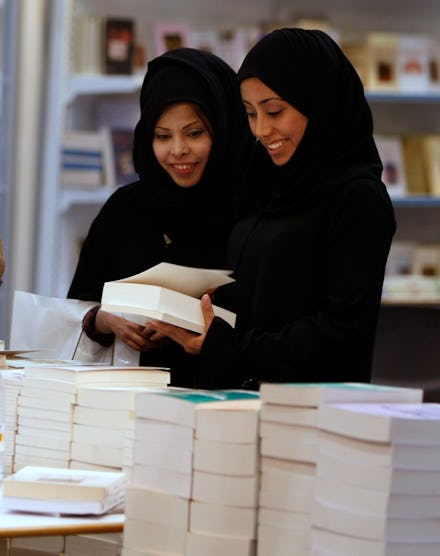Saudi Girls are More Likely to Study Science Than American Girls. Here's Why.

Saudi Arabia has a pretty bad reputation when it comes to women's rights. Its infamous driving ban prohibits women from getting behind the wheel, and its paternalistic guardianship system places women in the same category as legal minors.
But even with such restrictions, Saudi Arabian women are more interested in pursuing careers in engineering than their western counterparts.
Last month, the World Economic Forum's "2013 Global Gender Gap Report" warned that the Gulf has a long way to go for female equity. But the numbers of female engineering students in countries from Bahrain to Kuwait show strong contingent of women studying for to enter the career path with the highest starting salaries.
"The number of girls studying engineering in the Middle East is higher than the UK for all countries where stats are available," says Greet Brosens, managing director of Sagent Recruitment. "Kuwait jumps out with near parity at 49%, and some research even suggests that girls have now overtaken boys in engineering subjects. Bahrain [boasts a student female engineering population] of 32%. [And] 80% of all girls in Saudi Arabia are interested in engineering."
The same can't be said for the West. The U.S. Bureau of Labor Statistics predicts jobs in Science Technology Engineering and Math (STEM) fields will grow at double the rate of other fields. Yet a mere 19% of American university engineering graduates in 2012 were women. That number's no better across the pond; half of all UK state schools have no girls studying physics at all, and a mere 15-16% of undergraduate engineering students are female.
So why do so many young women in the Gulf want to be engineers?
The answer might have something to do with same-sex schools. Saudi Arabia's education system is gender-segregated. Female UK teens in same-sex schools are twice as likely to take physics, 75% more likely to take math, and 70% more likely to take chemistry than their peers in co-ed schools. Likewise, girls in the U.S. would be far more likely to study STEM subjects if they had visible female role models in those fields.
While same-sex schools have their benefits, it is going to take far more than education to close the gender gap. A STEM degree does not guarantee of a career in those fields, and sometimes entering those spaces requires challenging sexism and social norms at the work place. Female scientists and engineers across the globe have been facing the same challenge of carving out space in male-dominated areas. While a same-sex school might be great for fostering a supportive environment, it doesn't help prepare young women for working with men.
"The challenge with single-sex schools is that they benefit girls and their views and change their stereotypical thinking," Brosens explains. "It unfortunately does not change boys' stereotypical thinking. Worse, they cannot be exposed to intelligent girls and are left with stereotypical views from media. When they get in the real world, their view of girls and women is completely different, which doesn't make it easier for girls and women in the long run."
That real world disparity leads to Brosens' second solution: Increase visibility for female engineers and give all girls more options to see who they can become.
"From changing the way we market toys to our children, to changing the ways we interact with teenagers, to changing books and textbooks in schools, we have to change the way we interact with children and young adults," she says. "We have to flood the media, schoolbooks etc. with images of female scientists, engineers, astronauts, race-car drivers and give our kids [more diverse female] role models."
Infrographic by OnlineMBA.